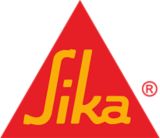Strictly follow installation procedures as defined in method statements, application manuals and working instructions which must always be adjusted to the actual site conditions.
Priming
Apply where required to the prepared substrate, Primer-600 at the required consumption.
Alignment
Profiled metal decks:
The sheets must be laid in the direction of the deck ribs. Where side/longitudinal overlap seams occur, they must be fully supported by aligning over the full surface of a top rib.
All deck types:
Unroll a sheet and align into the correct position. Subsequent sheets must be rolled out and aligned taking into consideration the overlap seam requirements.
Overlap seams
Side/longitudinal: 75 mm
End / T-joints: 75 mm
To achieve effectively sealed overlap seams, they must be rolled down firmly with a pressure roller or by applying pressure. If seams are not immediately closed after unrolling the Sarnavap®-5000 E SA, all seams must be cleaned with cleaner Sika Trocal L-100, Sarna Cleaner or Sarnafil T Prep. Allow the cleaners to evaporate completely before bonding.
Profiled metal decks:
At the end of the rolled sheet, an additional 20 cm wide Sarnavap®-5000 E SA support strip must be applied. It must be positioned so it aligns perpendicular to the deck rib direction. This provides a continuous support over the ribs allowing the ends of the sheets to be fully bonded.
Bonding
Check the alignment of the sheets before bonding. Re-align where necessary. At one end of the sheet, peel away part of the release liner from the underside and bond this part to the substrate. Then peel away the release liner sideways from the rest of the Sarnavap®-5000 E SA sheet to allow it to bond to the substrate. Then roll the entire surface area of the applied membrane with a suitable heavy roller.
At T-joints the edge of the middle, covered sheet is to be bevelled at 45°. Using a small pressure roller, all overlaps including the steps at the bevels must be firmly pressed together after being bonded into position.
Detailing
All details such as internal and external corners, upstands, vent pipes, support metalwork etc. must be cut and sealed effectively. Sarnavap®-5000 E SA must always be attached on the warm side of the thermal insulation. The upper edge of the Sarnavap®-5000 E SA must be taken up to the top edge / surface of the insulation.
Temporary waterproofing
If Sarnavap®-5000 E SA is to provide a temporary waterproofing layer during construction (up to 4 weeks), a slope of at least 2 % (~ 1,1°) must be provided to ensure drainage with no standing water. Roof drainage lines must be adequately sized.
If Sarnavap®-5000 E SA is applied between +5 °C and +10 °C ambient temperature, it is necessary to have all the seams heated first using hot air welding equipment e.g. Leister Triac. Equipment must be set at ~300 °C with a speed of ~5 m/min before being rolled down firmly with a pressure roller.

